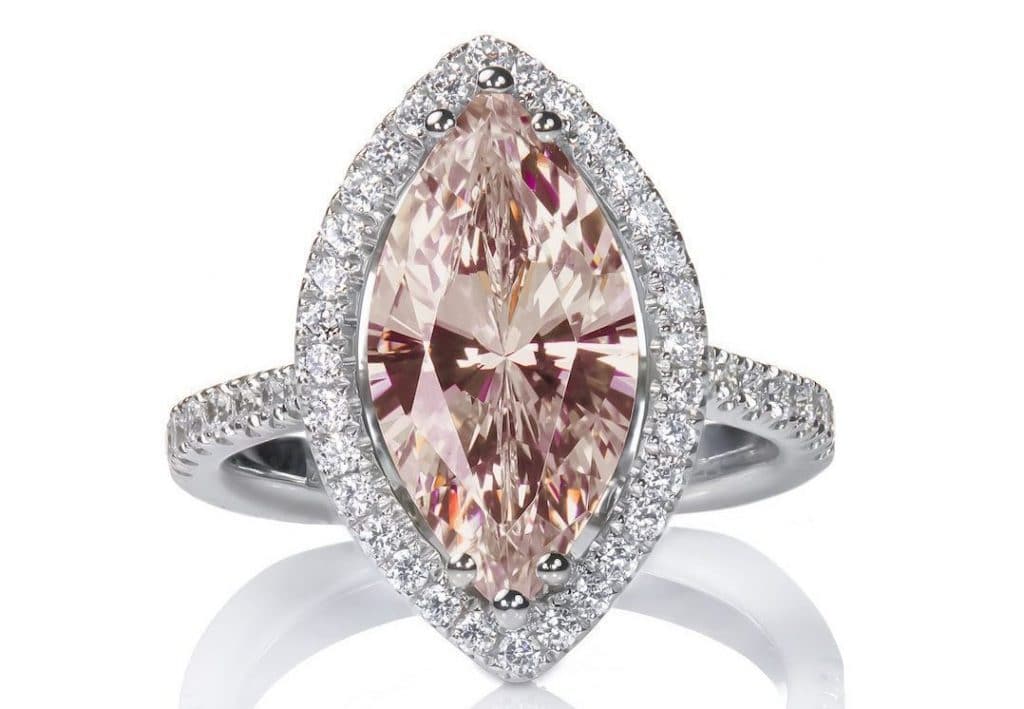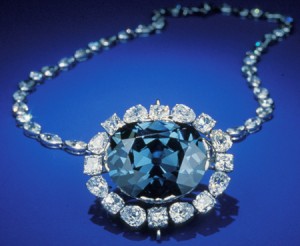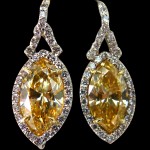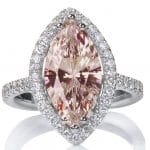Colored diamonds, also known as “fancy diamonds” or “fancy colored diamonds” are those diamonds which have natural, distinct hues of color which makes them rare, beautiful and highly desirable. Colored diamonds, are a stunning alternative to white diamonds, and come in many different beautiful shades. Although extremely rare and valuable, there is something for everyone who years for their own colored diamonds.
Why Are Colored Diamonds So Valuable?
While white diamonds are plentiful and beautiful, fancy colored diamonds consist of only 1 in 10,000 of the all diamonds in the world. There continues to be a decline in the production of colored diamonds, making them incredibly rare. The most common colored diamonds are yellow, whereas the green, red, pink and blue diamonds are found so rarely in nature that they are considered quite extraordinary.
Colored Diamonds and Grading
Just as with white diamonds, colored diamonds are influenced by the 4 Cs of grading and are priced accordingly. Yet there are some notable differences:
Cut: In general, colored diamonds are cut to the same proportions as white diamonds. However, to best accentuate the color, the polish in fancy colored diamonds is slightly different from the white diamonds. The cutter will take special note of a colored diamonds inclusions since they can complement the diamond’s color.
Clarity: While white diamonds depend on a high degree of clarity, colored diamonds can have some inclusions (sometimes the same color of the diamond) without affecting its brilliance.
Carat: As with all diamonds, the price depends on the carat size/weight of the stone and its rarity. A yellow diamond, although still rare, will cost less than an even more rare red, blue or green diamond of the same size.
Color: Generally, the more intense and saturated the color, or hue, the more expensive the diamond. Many diamonds will generally appear naturally with a dominant color and a secondary color, also known as a color modifier. There is a price difference based on the secondary colors (modifiers) found in the stone. For instance, a diamond graded as “Purplish-Pink” will generally cost less than a diamond graded strictly as “Pink” without any secondary coloring. To organize colored diamonds, the GIA has several different color grades, ranging from “faint” to “fancy vivid.”
Colored Diamonds: Enhancement
The hue and intensity of a colored diamond can be enhanced through various treatments (high pressure, high temperature, or irradiation). Gemologists will generally need to state any enhancements on the grading report, as there are distinct differences between a natural colored diamond and a color treated (or enhanced) stone.
Helpful Tips for Buying Colored Diamonds
- Ensure that you receive a grading report (or diamond origin report). Unfortunately, some jewelers may sell a “color enhanced stone” as a natural colored diamond, and the prices should reflect the difference.
- For the best prices, deal with wholesalers or direct buyers. Savings will be substantial, although it may take some effort to find a wholesaler who is willing to sell to the average consumer.
- Different colors of gold can complement different colored diamonds. Yellow diamonds look stunning in a yellow gold setting, while rose gold can enhance the look of warmer colored diamonds.
- A color modifier marginally lessons the price of the diamond. Colored diamonds with a secondary color or hue will generally be more affordable.
- If natural colored diamonds are out of your price range, opt for color treated stones or synthetic (man-made) colored diamonds. They offer similar beauty for a more affordable price, and can be found online from merchants such as Gemesis, D.Nea, Created Diamonds or Takara Diamonds.

























Pink Diamond Ring for Mrs Milk
i learned about colored diamonds. I thought diamonds was only one colored. I thought that they are a clear color.
Thanks for finally writing about >Colored Diamonds <Loved it!